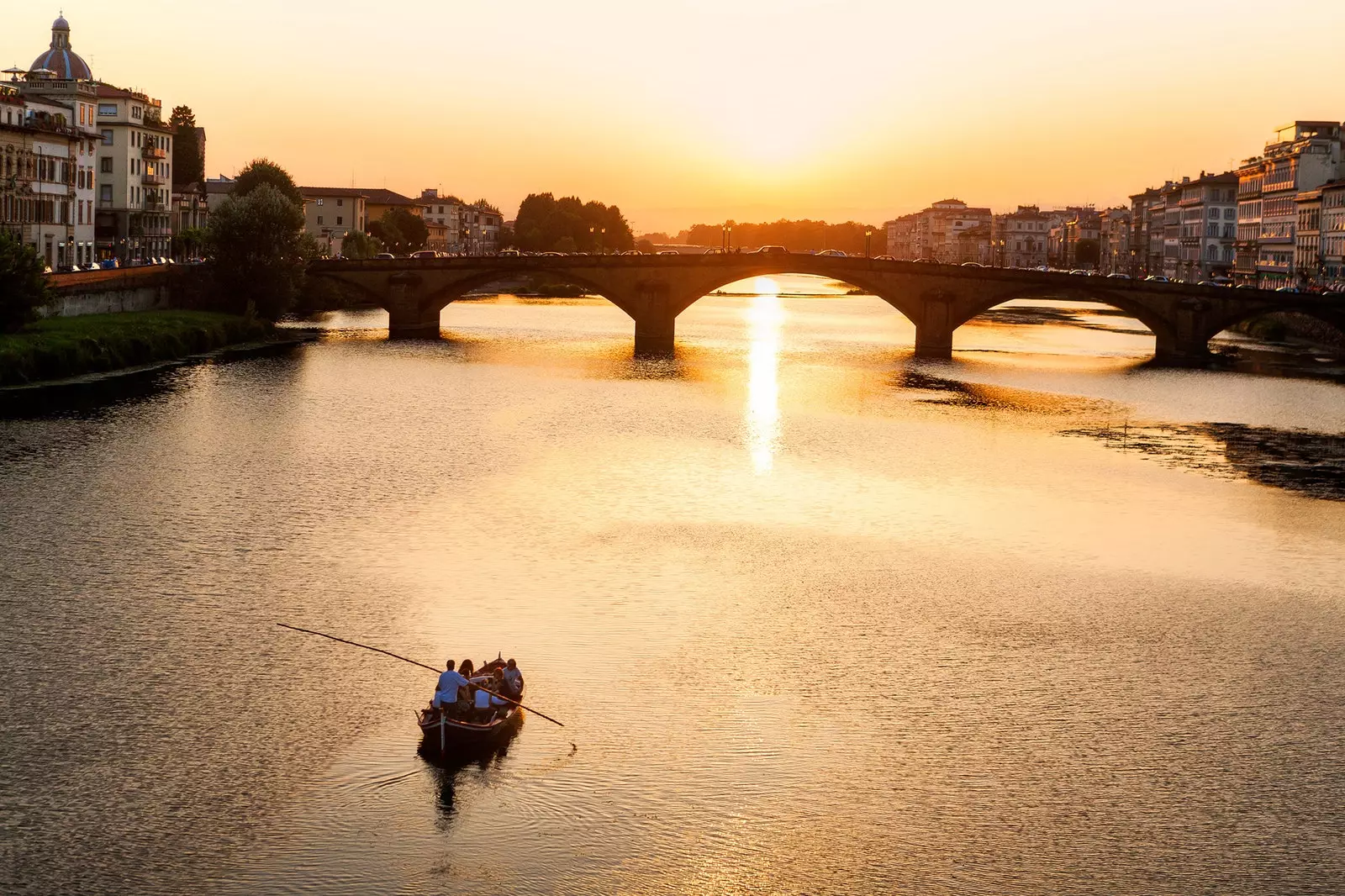
A trip through Tuscany accompanied by three books
I don't know about the others, but for me, Literature and History make me want to travel. Beyond the plot or the characters, are the landscapes, the trails of each era and the secluded corners the ones that most seduce my curiosity.
Thus, with the same intensity of the first youth trip to Paris , exalted by the readings of Henry Miller and Ernest Hemingway, today I go through a part of the Tuscany with three books in the backpack: Kill Leonardo da Vinci by Christian Galvez The secrets of the Medics i, by Michael White and the one entitled IWC Schaffhausen: Engineering Time Since 1868, by Manfred Fritz and Paulo Coelho.
Through them I draw a route that may seem random, or at least capricious, but the fact is that reading leads me to a maze of doubts which finally and fortunately forces me to prioritize on the ground to try to make a perfect loop in time.
I take as a starting point Vinci, the little town where the great Renaissance genius Leonardo da Vinci was born in 1452, to travel from here to there in search of the beautiful villas that the Medici built over three centuries and end up in ** Florence **, where ten years ago the then new models of the collection were presented Da Vinci from IWC Schaffhausen in the library of the uffizi gallery , which for years served to store the art pieces of the magnificent collection of the Medici family.
This, then, is a route imposed by the three protagonists of my readings: the Florence of the Medici , epicenter of the cultural renaissance of the arts, the most representative figure of the ideal of the Renaissance man, Leonardo da Vinci , Y the most revolutionary watch for its time , who bears the surname of the genius. The family and the genius were linked throughout most of the artist's life, while the watch would be reunited with him centuries later.
The Toscana , whichever way you look at it, is a destiny to which we find ourselves headed for one reason or another: the linguist finds in the tuscan the italian dialect that has distanced itself the least from Latin, while watch lovers can step on the stage that gives rise, not to a watch, but to an entire collection of watches from the Swiss firm IWC Schaffhausen named Da Vinci (IWC's first wristwatch equipped with the Beta 21 quartz movement in 1969 and then, in 1985, the first chronograph with a perpetual calendar mechanically programmed for 500 years and adjusted via the crown) .
Needless to say, lovers of art, nature or gastronomy find in this region hundreds of excuses to choose it over others not exempt from the same charms.
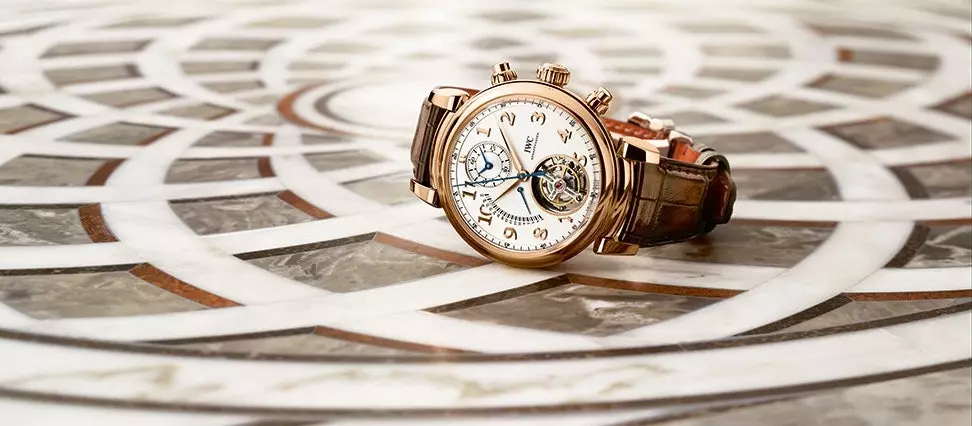
IWC Schaffhausen named Da Vinci
DAY 1: VINCI
Before succumbing to Stendhal's syndrome, also called from Florence , or rather to slow it down as much as possible, we landed in Florence and immediately headed for the little town of Vinci, a town in the north of Tuscany, integrated into the Mugello , just 44 kilometers from Florence.
The Castle Conti Guidi dominates the historic center of Vinci from the slopes of the Montalbano mountains. It was the first building to be built on top of that hill in 1164. Inside is the Leonardo da Vinci Museum , in which they exhibit wooden models of the machines designed by Leonardo and explained in his codes.
It is curious to see how these models had anticipated the inventions of the future such as armed tanks or the mechanical cannon, among others. Since the publication of the book The Da Vinci Code the museum is very visited, so it is better not to go on weekends.
Behind the Castle of the Counts Guidi attracts the attention of the visitor Mario Ceroli's large wooden sculpture, The Vinci Man, Inspired by Leonardo's famous reproduction of the vitruvian man , originally made by Marcus Vitruvius Polion (1st century BC) and whose proportions the genius significantly improved.
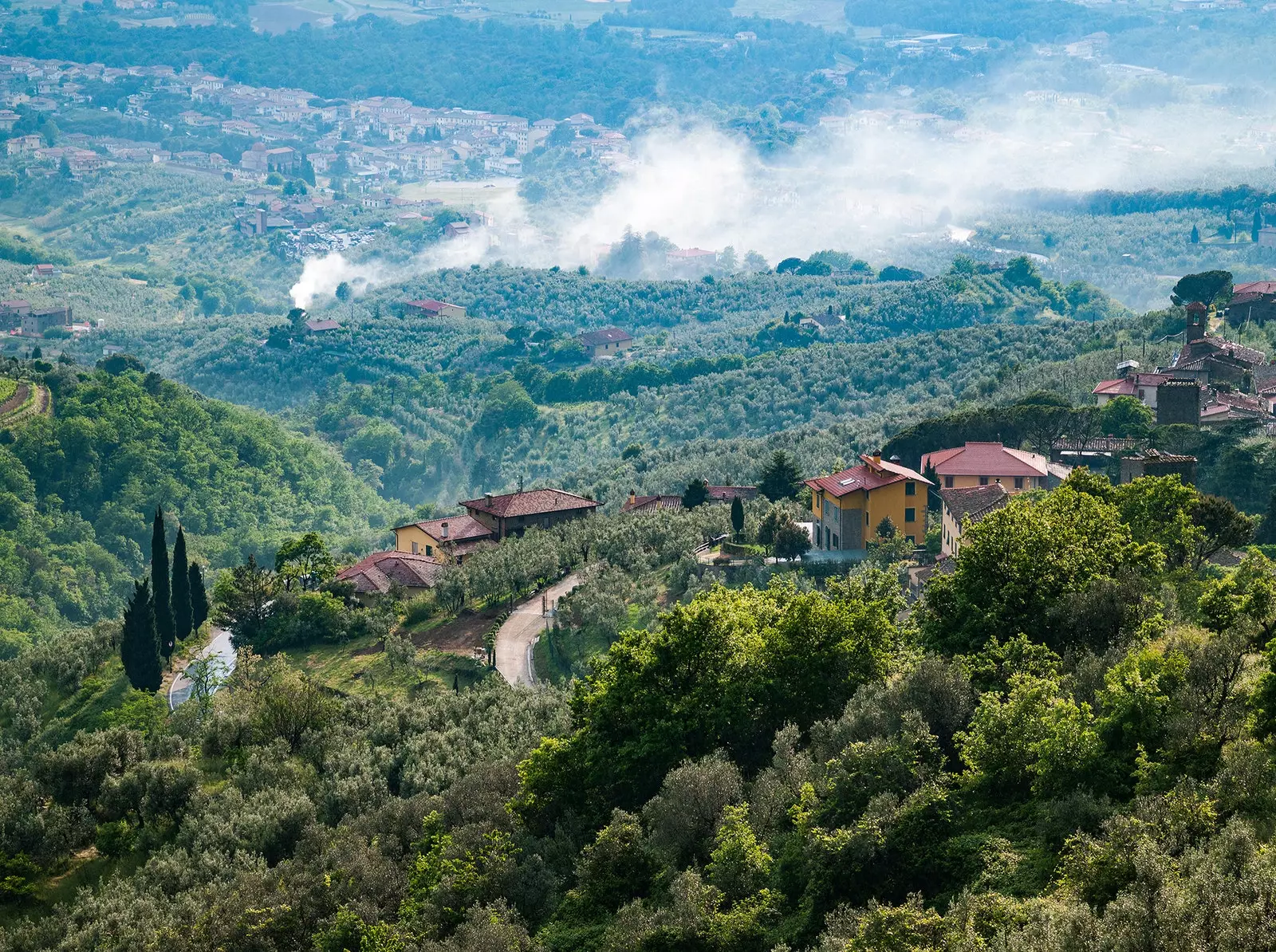
Vinci, succumbing to Stendhal
Next to the museum is the Church of Santo Stefano and, two kilometers from the town center, in Anchian , Leonardo's house, which has nothing special, beyond the reproductions of his drawings. A virtual Leonardo welcomes him into his abode.
Ultimately, in Vinci everything revolves around Leonardo. In the little baptistery of the Church of Santa Croce there is still a 15th century fountain to which Leonardo was baptized. A tombstone commemorates the event with the words that his grandfather Anthony daVinci, not his father, he wrote in his log. A gesture that perhaps always reminded Leonardo of his illegitimate son status.
The Leonardian Library _(Via Giorgio La Pira, 1) _ it has become a point of reference for academics and amateurs internationally. It has the facsimile reproduction of all the Vincian manuscripts and drawings, as well as all the editions of his works since the early 1600s. The institute has developed an online archive where you can consult the BIL (Leonardian International Bibliography) as well as the E-Leo project : a digital archive dedicated to the history of science and technology of the Renaissance, with more than 6,000 pages of Leonardo's manuscripts and drawings, which can be viewed online for free.
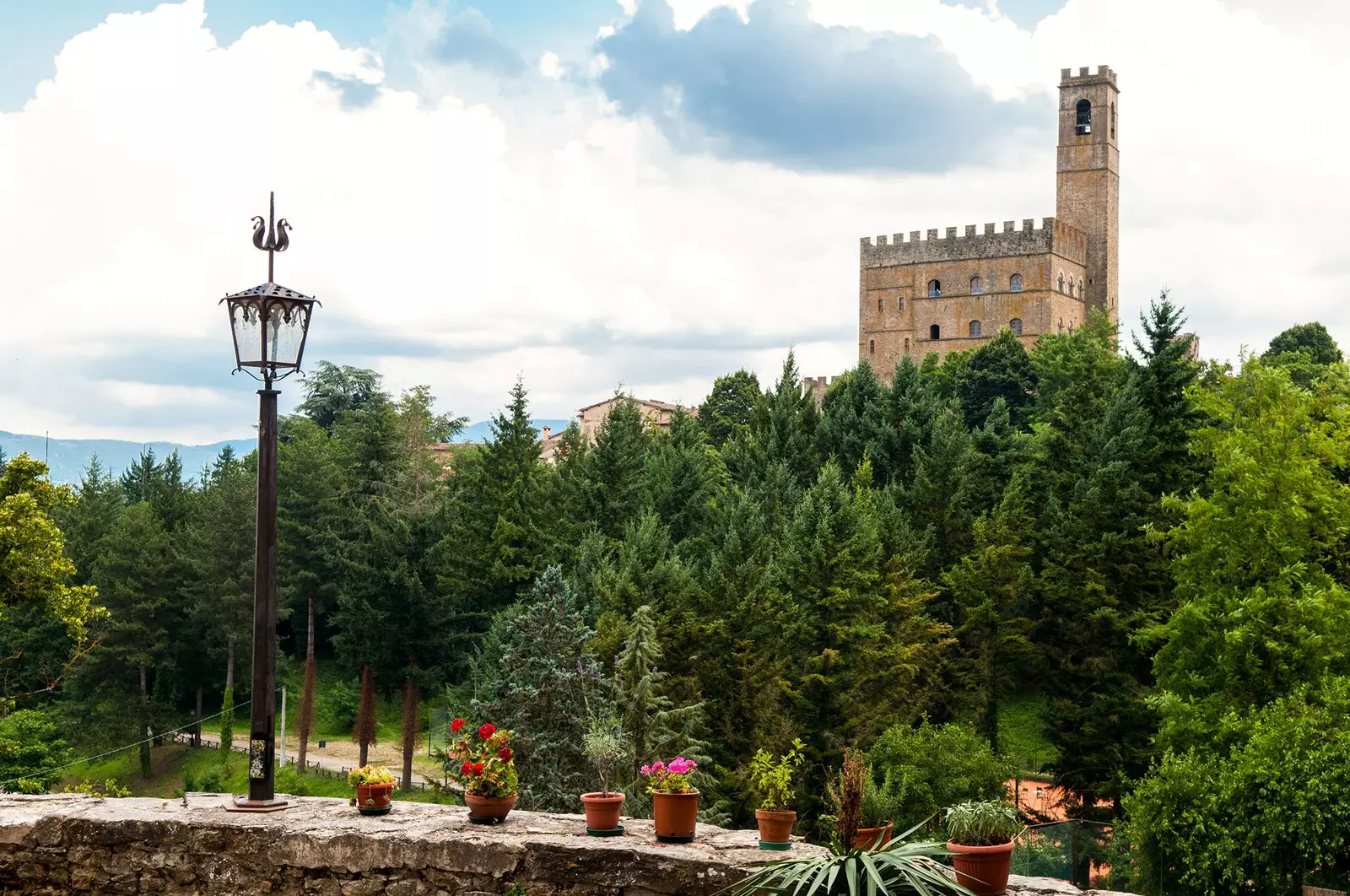
Castle Conti Guidi
After a day dedicated exclusively to the Renaissance genius, the ideal would be to stay in Villa Leonard , a beautiful five-star villa surrounded by olive trees and vineyards, or in Farm House Casetta , a farm that produces wine, olive oil, honey and jams, which offers individual apartments on a movie set.
But before taking refuge in one of these accommodations, we recommend making a technical stop at La Torreta restaurant , just behind the square where the castle of the Counts Guidi is. His Tuscan cuisine is exceptional. In addition to pasta, meat lovers can taste the famous fillet steak alla fiorentina , about five centimeters thick.
THE MEDICI VILLAS
The best time to travel to Tuscany is fall , the time of the harvest and the grape harvest, the olive groves full of olives and the kitchens full of Ceps mushrooms, black and white truffles. In this landscape characterized by the reddish tones of the vineyards in contrast to the browns of the plowed land, are the great villas built by the Medici between the 15th and 17th centuries.
In total twelve villas that were included in June 2013 in the UNESCO World Heritage List , and today they have experienced different destinations: some are true museums, others are occupied by institutions and others have been sold or transferred to individuals, who keep them for private use or to hold events.
The Florentine Medici family, the most important of all time, which included bankers, politicians and even popes among its ranks, used its great power and immense wealth to rule Florence, hoard a immense artistic heritage and build imposing villas throughout the territory of Tuscany.
the system medicean villas constituted a true microcosm around which the rituals of the Medici court were developed. Often established on the site of ancient castles, they express the high level of Renaissance and Baroque architecture achieved in Tuscany, fact that differentiates them from the simplest Tuscan rural houses.
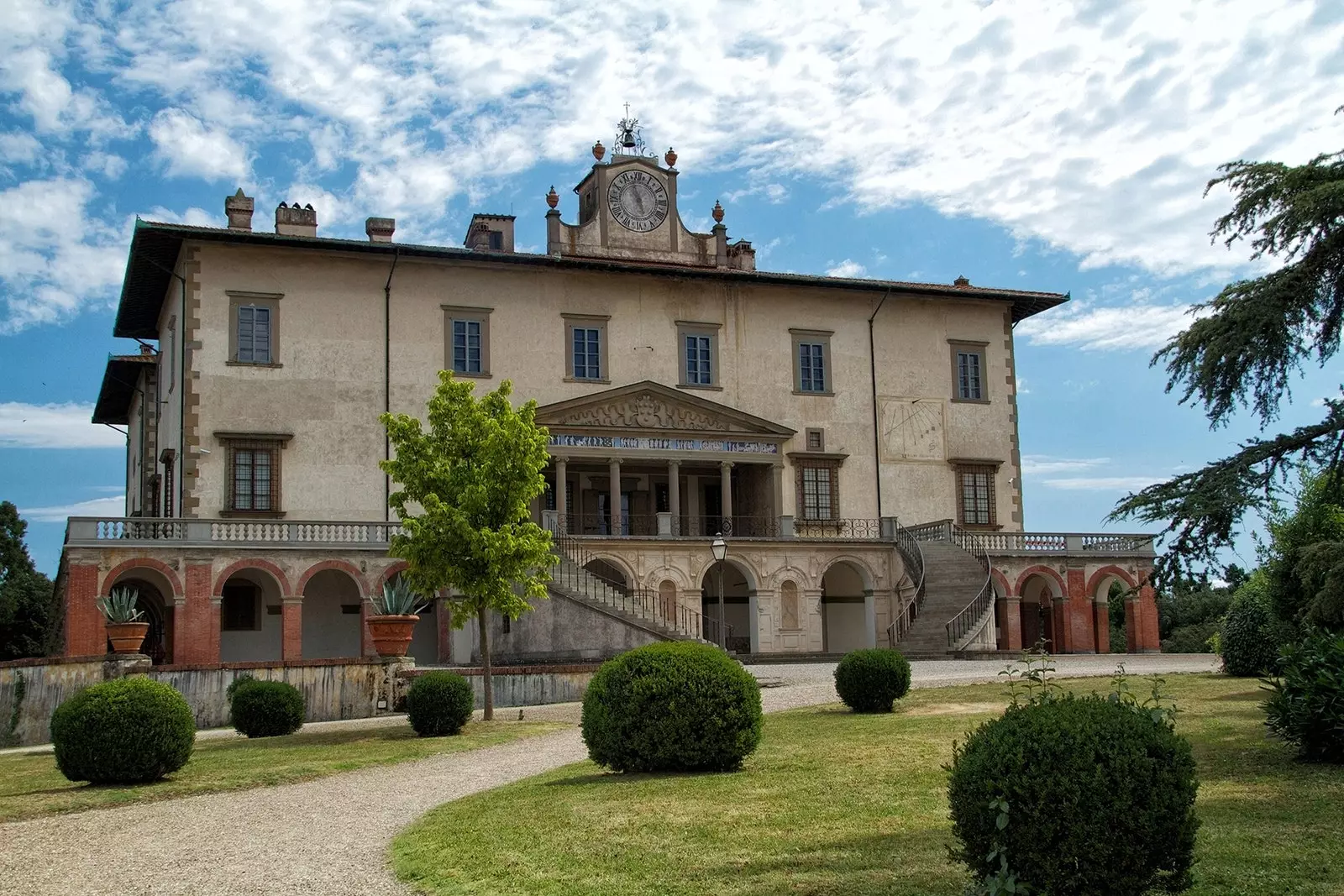
Poggio a Caiano
DAY 2
An hour's drive from the little town of Leonardo is the province of Prato , In which it is found the Medicean villa of Poggio a Caiano which, built by Giuliano da Sangallo for Lorenzo de' Medici Around 1480, it is considered the first Italian Renaissance villa. Located in the town of Poggio a Caiano, today it is state property and houses, in addition to a beautiful garden, two museum cores: one of the historic apartments (ground floor and first floor) and the other, the still life museum (second floor) .
It is a building in which there are elements that will later be a model for future developments of the villa typology: the interpenetration between interior and exterior through filters such as loggias, the symmetric distribution of the environments around a central hall, the dominant position in the landscape and the conscious recovery of classical architectural elements.
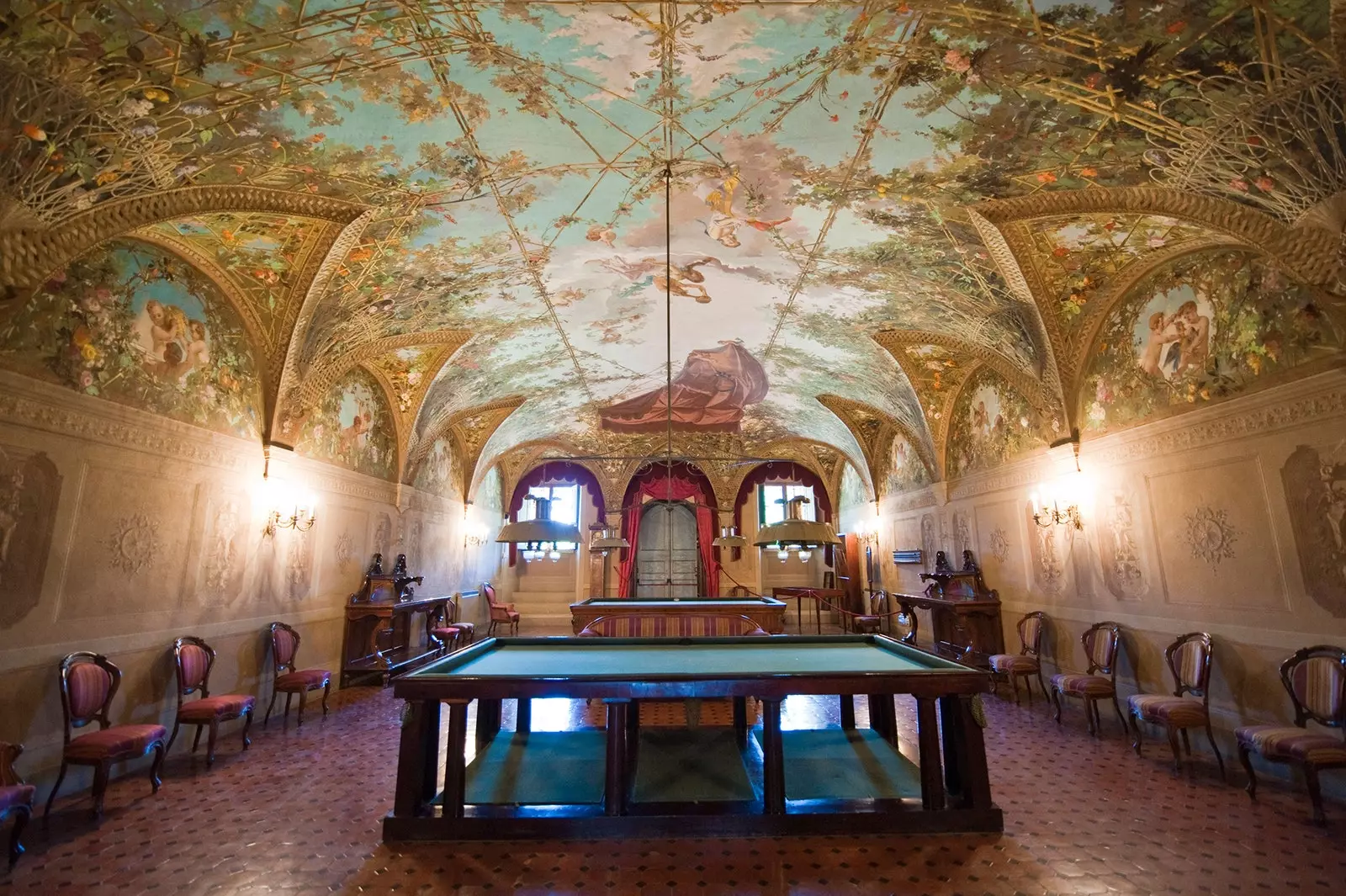
Interior of Poggio a Caiano
In this region, birthplace of the painter Filippo Lippi and the actor Roberto Benigni, where numerous manuscripts of Dante Alighieri, and about five kilometers from the town of Poggio a Caiano, is the town of Carmignan, where we will taste the succulent food Slow region of.
The figs grown here are slowly dried in the sun before being steamed by sulfur gases to maintain their juiciness. They can be accompanied by a glass of Holy wine and Mortadella di Prato, another product slow food.
The restaurant Old Tower offers a vaulted room with an old wood stove where the Chef Mattia Verni prepare traditional recipes with local seasonal products and wines from the region. famous for his Florentine steak a, the menu offers other delicacies: gnocchi with beetroot and gorgonzola or rabbit ragout with olives , in addition to Bavarian white chocolate.
In the artimino hills, in an area considered sacred by the Etruscans, just 11 kilometers from Carmignano , it's found Villa La Ferdinanda, commissioned by Ferdinand I de' Medici a Buontalenti at the end of the 16th century. Built as a hunting lodge, it was completed in just four years and represented a kind of link between the various estates of the family; a place dedicated to the humanistic arts and poetry.
The town, also baptized as "the town of a hundred chimneys" (as many as apparently needed Ferdinand I to keep warm when he suffered from gout, an ailment that afflicted almost the entire family), today belongs to a private company and hosts different meetings and cultural events and has three adjoining structures in which to stay: the Hotel Paggeria Medicea , the Borgo di Artimino apartments and six exclusive apartments called “Fagianaie”, pure luxury. Within the complex there is a restaurant and a farm where you can taste olive oil and wine and attend cooking classes. An archaeological museum and a historical wine archive complete the offer.
DAY 3
We head towards the north of the region, on the way to Barberino di Mugelo, where the Medicean villa of Cafaggiolo , also known as Castle of Cafaggiolo, which was the favorite abode of Lorenzo de Medici the Magnificent , who spent his adolescence here receiving humanist philosophers.
The villa is one of the great masterpieces of Renaissance architecture. commissioned by Cosme the Elder a Michelozzo in 1443 , would transform the old 14th century castle into a residential building. It is a masterpiece of Renaissance architecture, used by the Medici for celebrations, balls and parties.
Today, despite the many changes that have occurred over the centuries, the villa still retains original elements. The castle can be visited and often hosts conferences, events, guided tours with tastings and cooking lessons.
After the extinction of the Medici family , after the death in 1737 of the last man of the powerful lineage, the Villa passed to the Habsburg House Lorraine ; subsequently, the Italian government sold it to the Borghese family undergoing substantial changes. Today it is closed to the public and work is being done on its reinsertion to incorporate the Villa into a large complex that will soon open to the public.
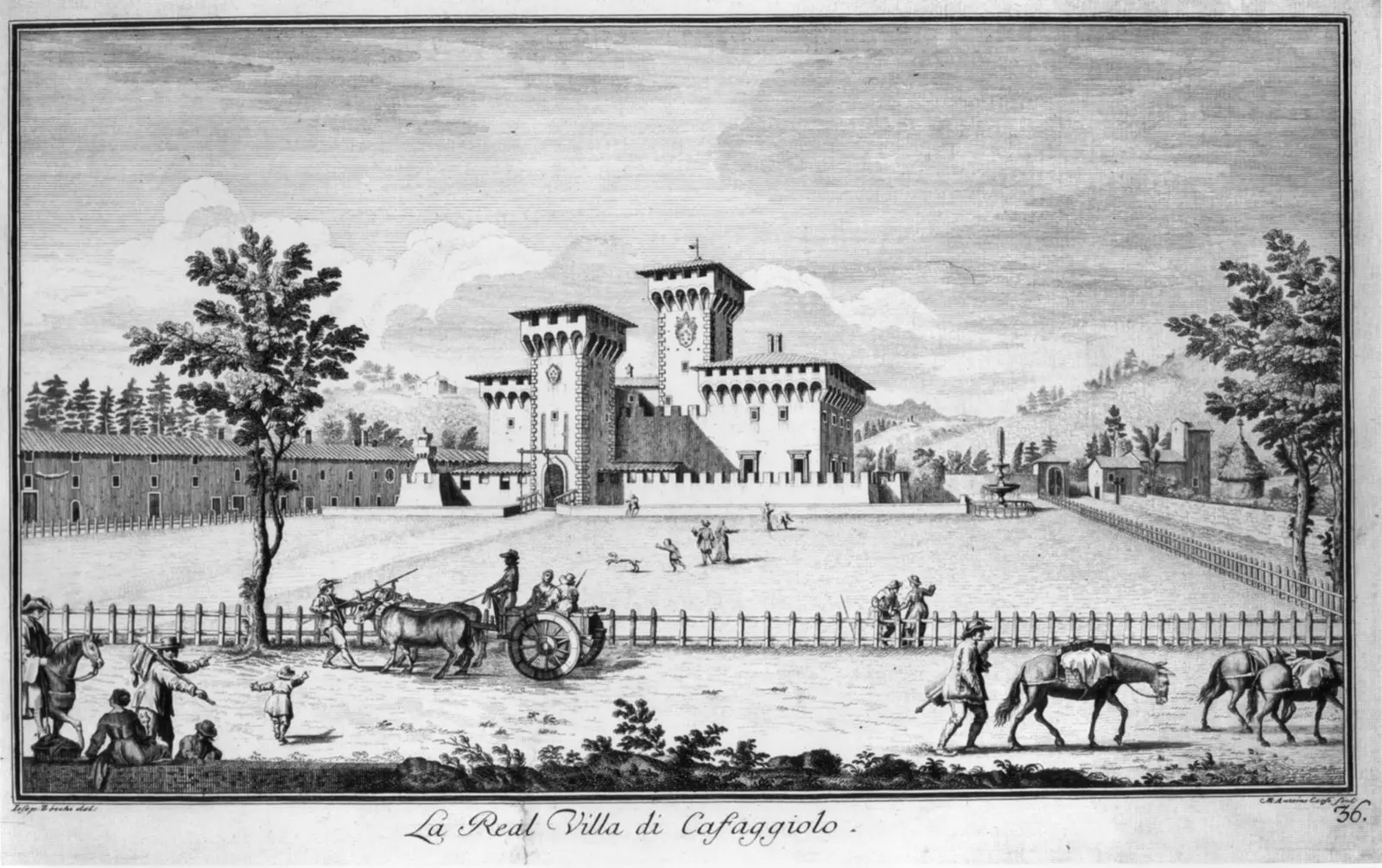
Villa of Cafaggiolo
To relive the great hospitality and gastronomic quality of Tuscany, whose fame dates back to the Middle Ages, when the region became an area of commercial transit, it is advisable to make a stop at the Osteria del Cavallino Bianco , an old inn, originally a post office, where travelers passing between F Florence and Bologna and vice versa, stopping to cool off and spend the night before embarking on the journey of the Tuscan-Emilian Apennines . The inn, which preserves the original poster of the white horse that dealt with the transport of goods at the time, today offers a Tuscan menu based on meat and game.
The Villa Medici Lo Sprocco it is only seventeen kilometers to the east. It is said that this villa enjoys the first sunlight of the day and the last at sunset, whence the first shoot emerges, whose ancient Florentine name was "sprocco". Built in 1400, over the years it has undergone many changes. Today the villa hosts weddings, events, cooking classes and it houses a restaurant and a bed & breakfast with five spacious rooms. The restaurant has a varied wine list from the area and typical flavors extracted from organic products.
Just an hour's drive almost in a straight line to the south and approaching Florence, in the town of Pontassieve , on top of a hill and surrounded by cypresses, you can glimpse the Trebbio Castle , in which the Medici family spent long stays, enjoying the countryside and the company of illustrious artists. The spacious halls and the vast park were the place for meetings, parties, balls and receptions for princes and popes.
In 1515, the gates of the castle were opened to Pope Leo X and some of the future wives of the Medici family were received there.
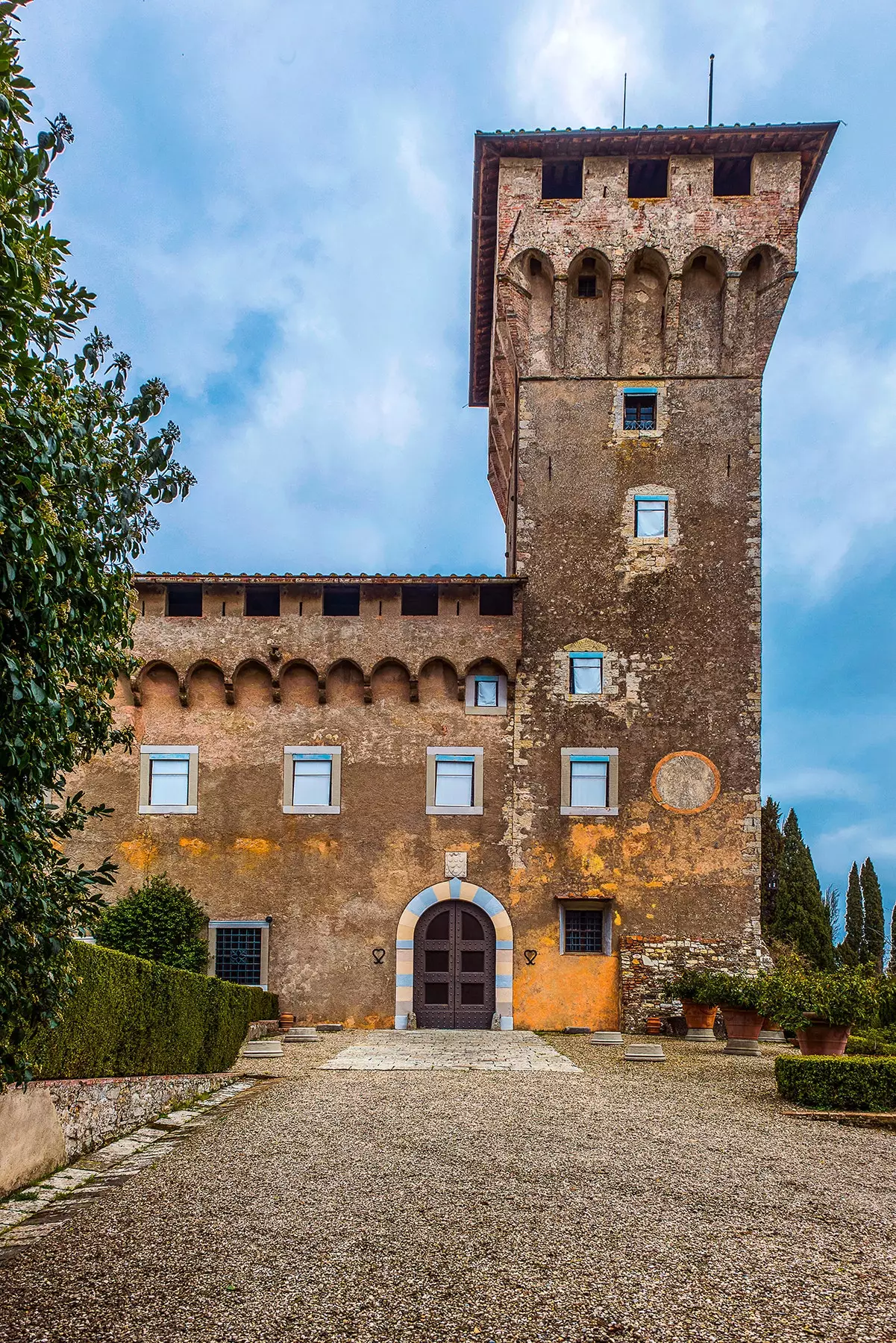
Trebbio Castle
DAY 4
Little by little, the 49 members of the Medici family came to surround Florence with their villas, while in the Grand Ducal period we witness a constellation of these architectural structures, even in areas far from the capital. The Villa Demidoff, situated in the hills of Florence, and bought by Francis I de' Medici in 1568 , also known as Villa di Pratolino , was the largest of the Medici estates, with a huge Renaissance garden and extensive stables.
In the 18th century, they were removed and sent to the Boboli Gardens some of his sculptures. The gardens were left to grow wild until Grand Duke Ferdinand III purchased the property in 1820. The villa was demolished and the garden was redesigned in the English style. In 1872, the estate was sold to the Yugoslav prince Pavel Pavlovich Demidov and later, in 1981, it was acquired by the province of Florence, which currently opens it to the public from May to September.
It is located in one of the most beautiful parks in the area and preserves some of the monuments of the time: the huge statue of the Colossus of the Apennines made by Giambologna and also the Mugonne Fountain with a statue equally of Giambologna, the Buontalenti Chapel and Cupid's Grotto by Buontaltenti. To visit the Maschera Pond, the aviary and Lodge of Montili you have to make an appointment.
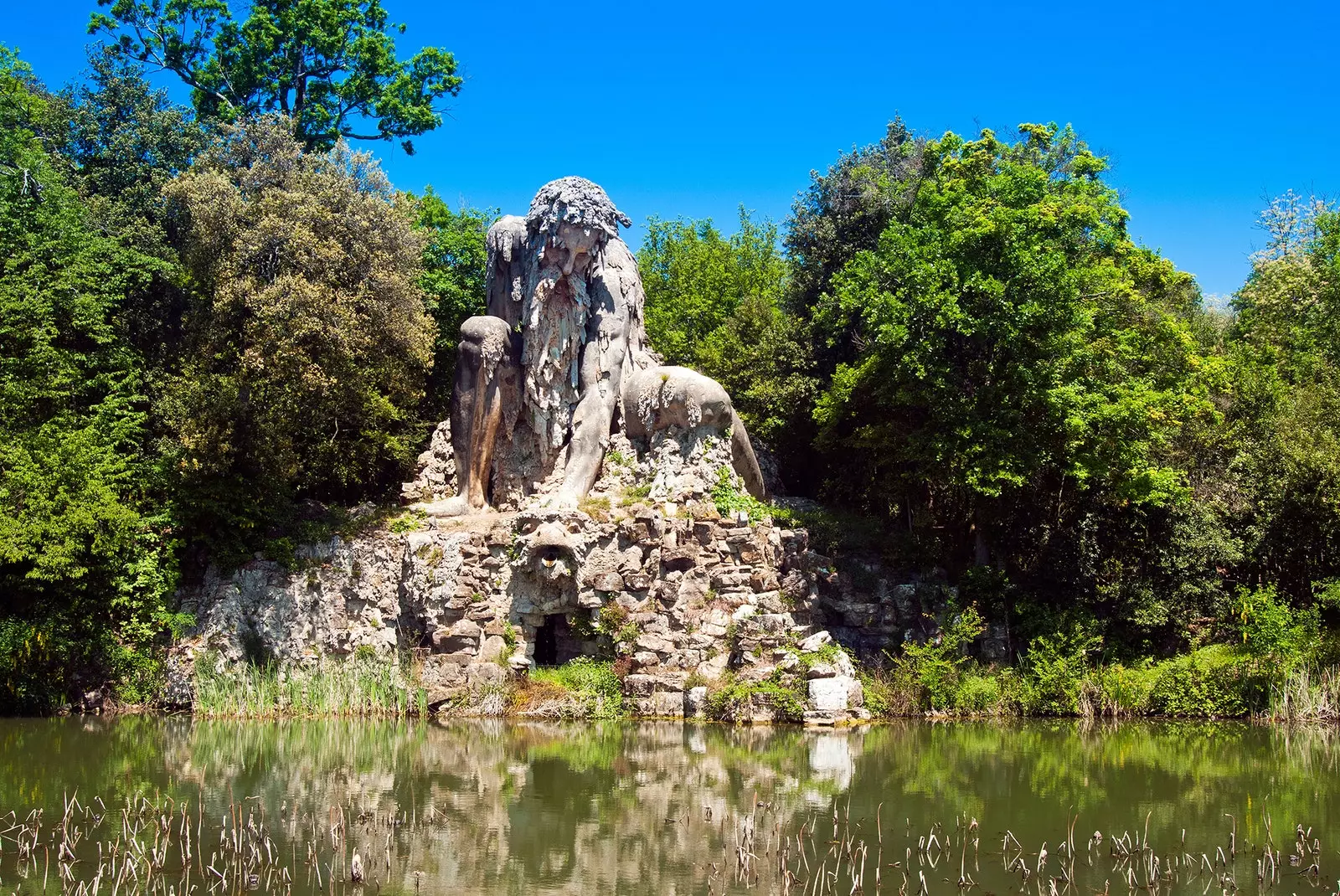
Colossus of the Apennines
On our last day we succumbed to the charms of florence and, armed with firenze card, we visited without keeping the kilometric queues the dome of the Duomo, the Uffizi Gallery, the Palazzo Vecchio , the Plaza de la Signoria, the Baptistery of San Juan, the Accademia, and so many other museums, squares and churches or, why not, the Palace of the Podesta , inside which is one of the most beautiful courtyards in Italy, decorated with the coats of arms of the successive magistrates who lived in the palace, and in whose dungeons Leonardo Da Vinci was tortured when he was accused, perhaps by his then friend Sandro Botticelli, of sodomy.
The palace houses a museum that has excellent examples of Italian Renaissance sculpture and a decorative arts section, highlighting marble and Michelangelo's bronzes and the exceptional collection of works by Donatello.
Before leaving, and to forget the bitter taste of this dark chapter in history, which was about to deprive us of the legacy of the great genius, we treated ourselves to a plate of pasta and a good wine from the region in which Trattoria ZaZa , which is located in the Central Market Square and whose decoration will leave us less impressed.
EPILOGUE
This cultural (and sensory) walk through Renaissance Tuscany, guided by the footsteps of one of the greatest geniuses in history -who died in the Château du Clos Lucé, in the Loire Valley , in 1519- and through some of the residences of the 49 members of the powerful lineage that ruled Florence for three centuries, constitutes a little piece of history and an incentive to start another route that takes us to France, more specifically to the Clos Lucé castle chapel , where the remains of Leonardo are found. To complete the knowledge about the genius, one last visit to the Louvre Museum is essential, which has 7,000 notes and sketches by the master, without forgetting to admire the famous Mona Lisa.
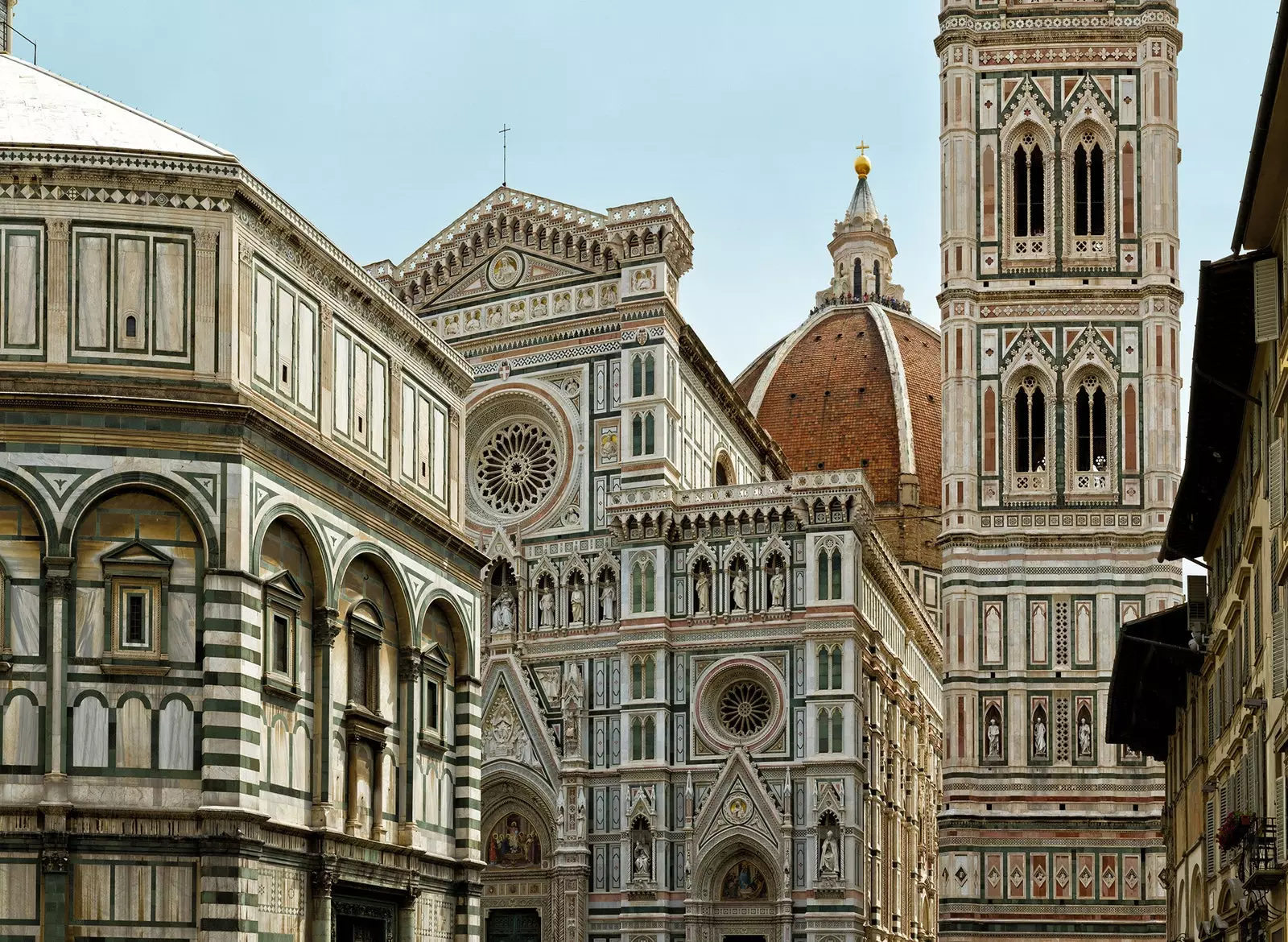
Florence deserves a Renaissance
